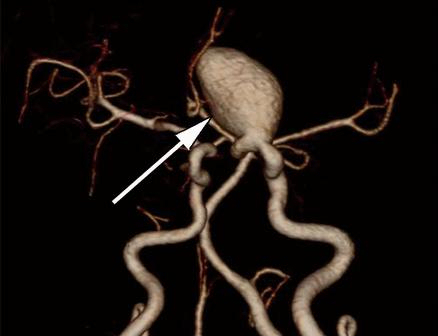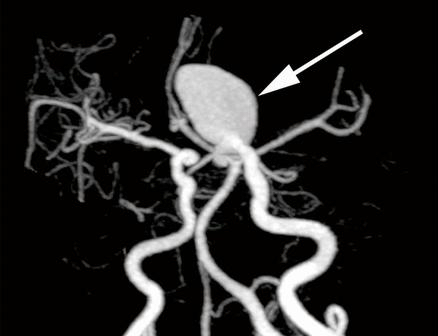- Gamma Knife
- Questions to Ask Your Doctor
- Unruptured Aneurysm
- Ruptured Aneurysm
- Clipping
- Occlusion and Bypass
- Endovascular Embolization / Coiling
- Flow Diversion
- Onyx Liquid Embolic System
- Should I Get a Second Opinion?
- Treating Physicians
Unruptured Aneurysm


Volume-rendered image (left) and maximum-intensity-projection image (right) from a 47-year-old woman with a left internal carotid aneurysm.
Most aneurysms are asymptomatic, particularly ones that are small. Occasionally, large aneurysms may cause the following symptoms related to pressure on the adjacent brain or nerves:
- Peripheral vision deficits
- Thinking or processing problems
- Speech complications
- Perceptual problems
- Sudden changes in behavior
- Loss of balance and coordination
- Decreased concentration
- Short-term memory difficulty
- Fatigue
Because the symptoms of brain aneurysms can also be associated with other medical conditions, diagnostic neuroradiology is regularly used to identify both ruptured and unruptured brain aneurysms.
Things doctors consider in deciding whether or not to treat an unruptured aneurysm:
- Risk of Hemorrhage
- Is it probable or not that the aneurysm will rupture?
- Size and Location
- Age and Health of Patient
- Family History – Is there a family history? Have any of those aneurysms ruptured?
- Surgical Risks
The recovery period is typically shorter for a treated unruptured brain aneurysm those who had a ruptured brain aneurysm. Although, survivors of unruptured brain aneurysm treatment may suffer many of the same physical and emotional symptoms as a survivor of a rupture, they will have a shorter hospital stay, require less rehabilitative therapy, and return to work more quickly.
Common Questions
Upcoming Events
News Room
Connect with Us
- Subscribe to our Knuckle-Up Newsletter
- Become a Fan on Facebook
- Follow us on Twitter
- Follow us on Instagram
- Join our Online Aneurysm/AVM Support Group
- Join our Online Parents Support Group
- Join our Online Young Adult Survivor’s Support Group
- Join our Online Aneurysm/AVM Caregivers Support Group
- Join our Online Honoring the Taken Support Group
- Support Group Locations
